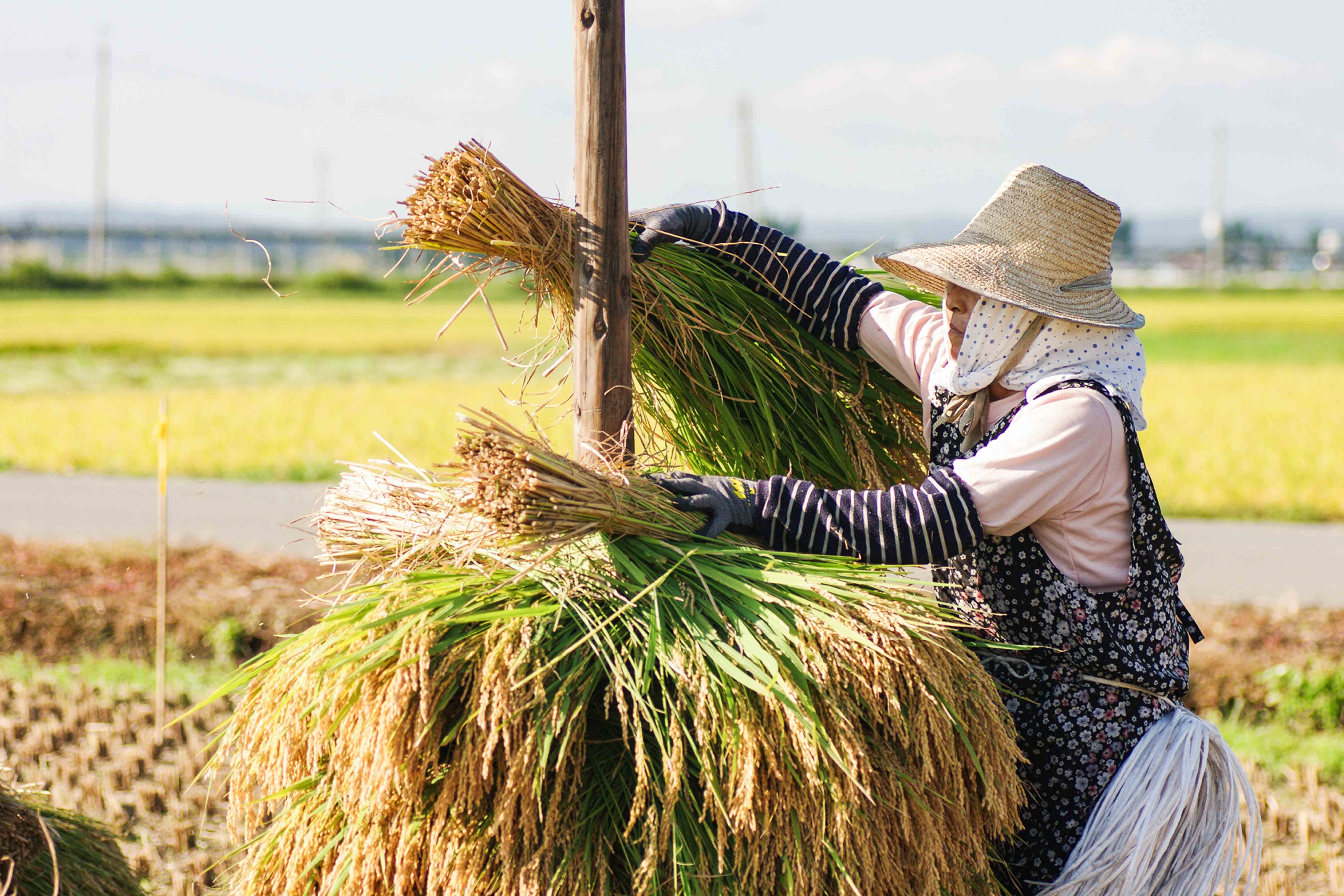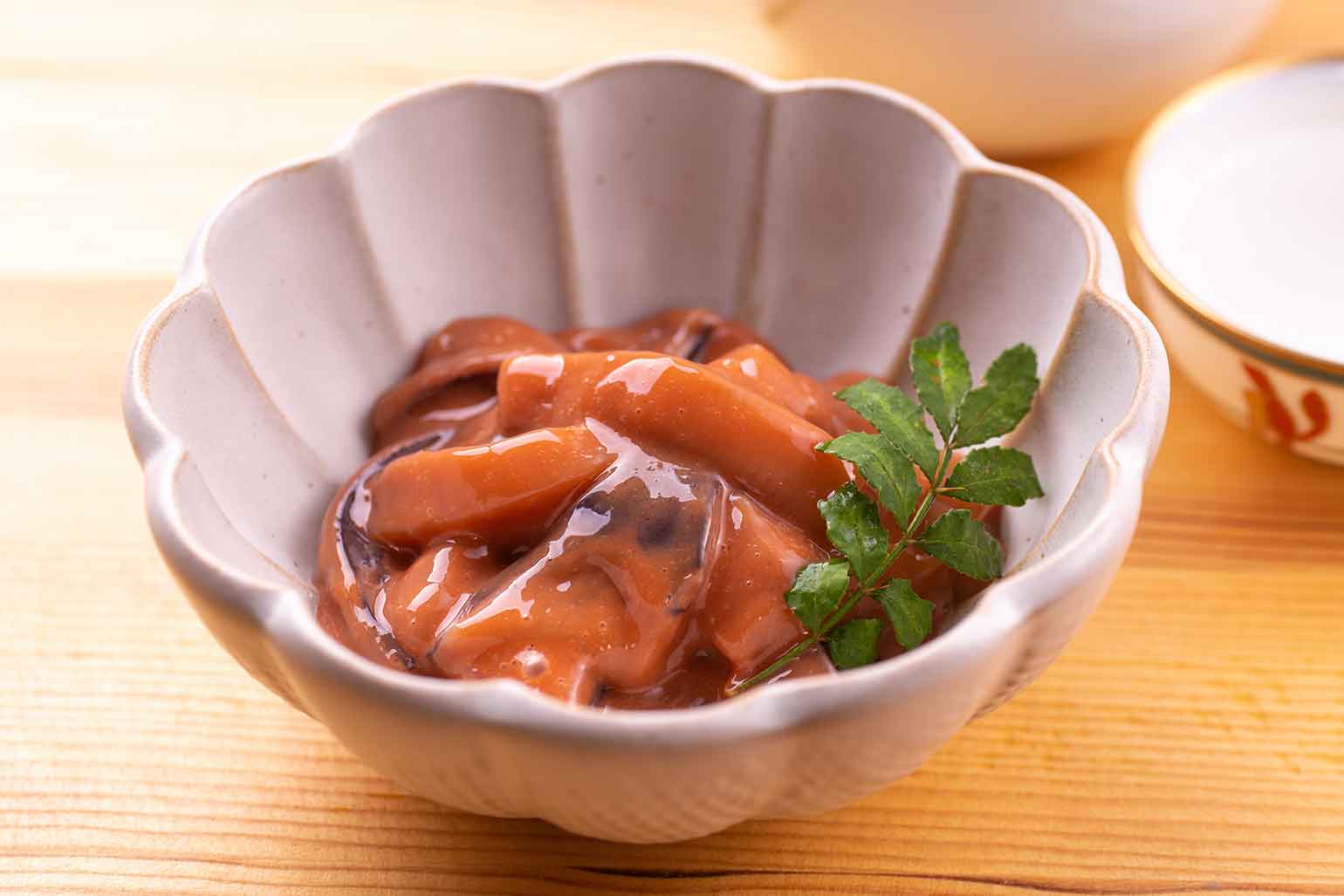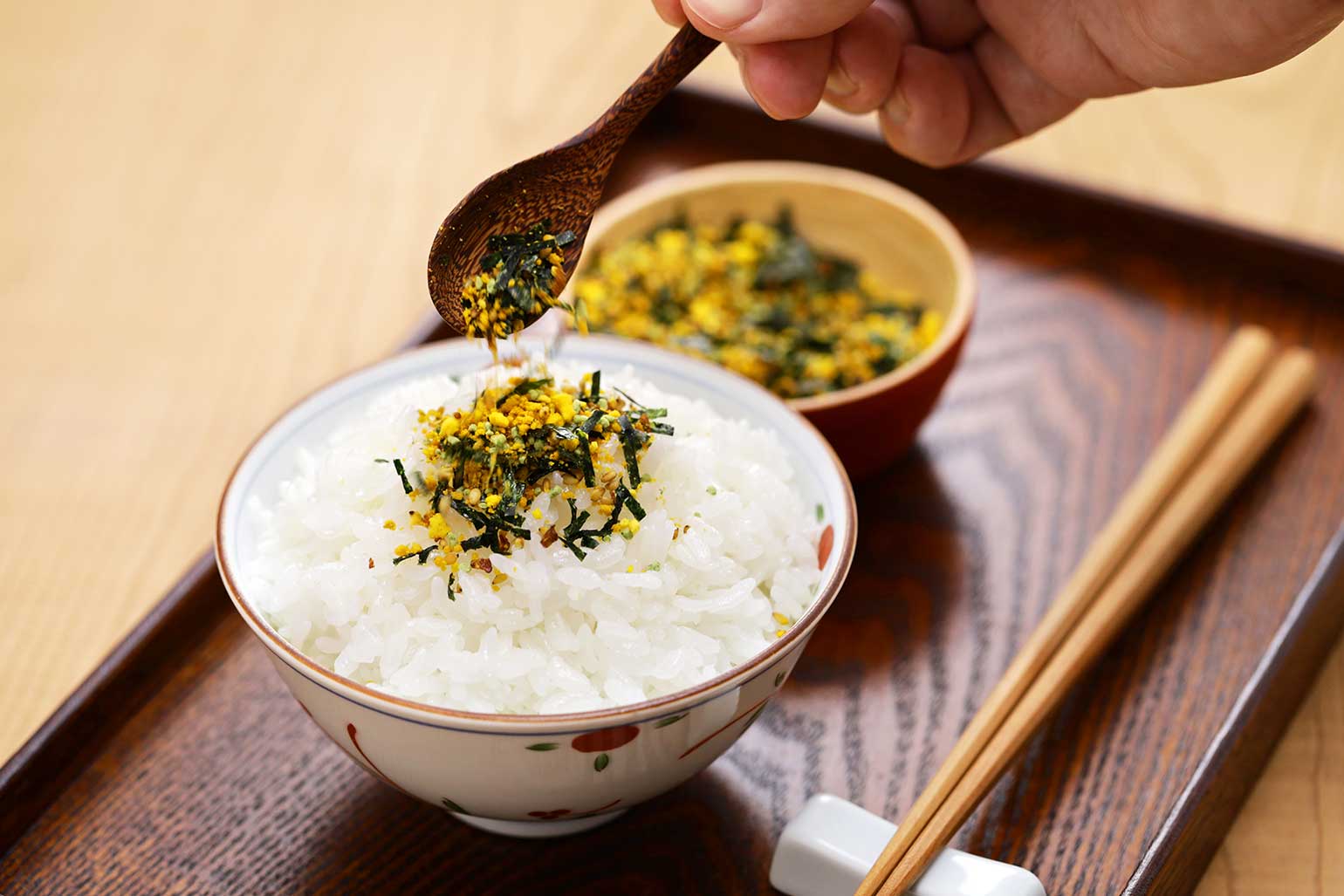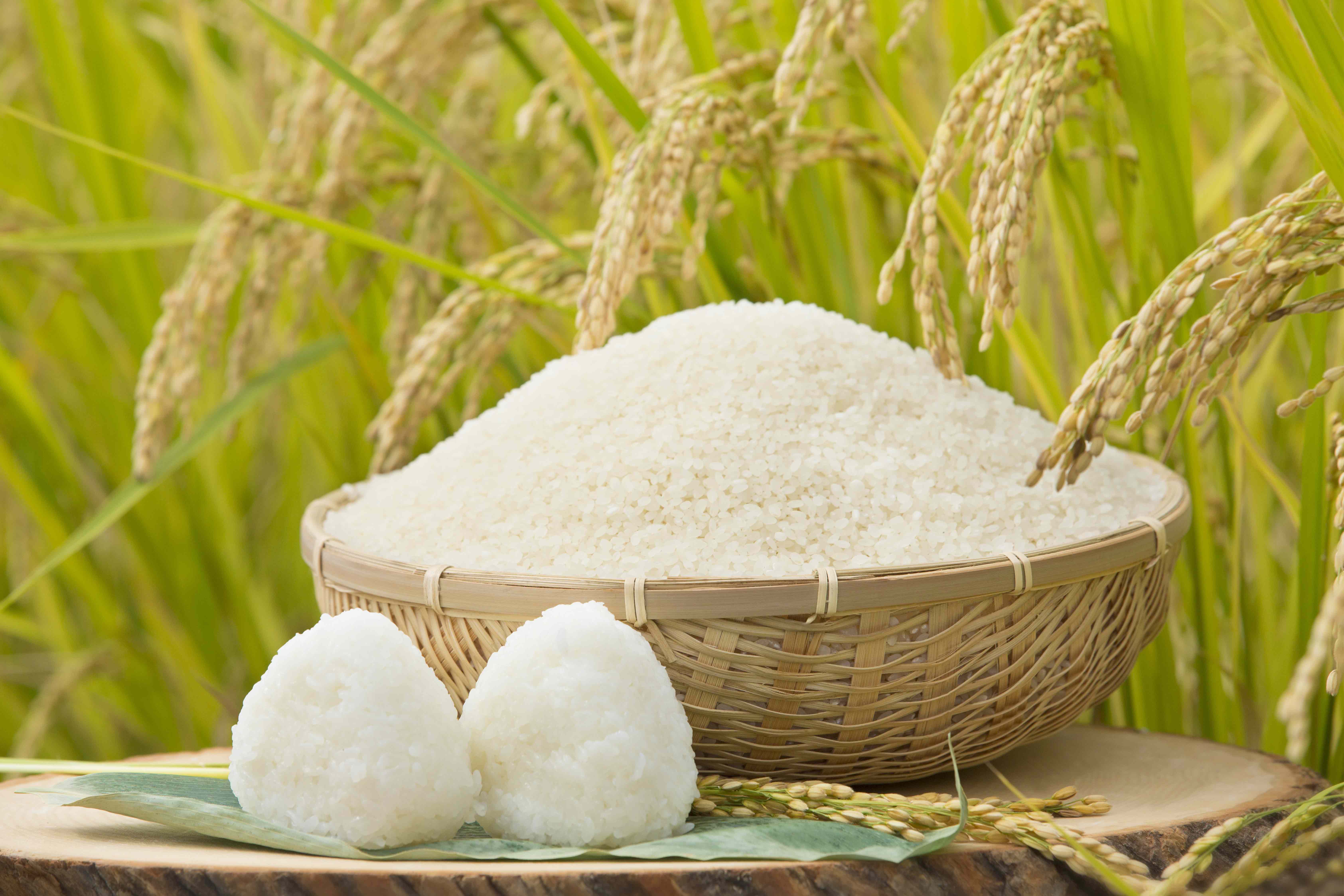It is known well that Japan has a food culture where “Rice” is the staple food. Well, nowadays, wheat products such as breads and noodles are often eaten due to the spread of Western food culture in general. That is because the influx of various food cultures from abroad, especially after the modern era. As a matter of facts… The consumption of “Rice” in Japan is not high compared to the other countries of the world. Therefore, it might be hard to say for sure that in today’s Japan, the staple food is “rice”. However, in the typical set of “Japanese food”, it is so-called “O-Zen (set meal)”, which consists with soup and several side dishes, “Rice” is essential. Considering the facts that this country, Japan, was founded on rice farming in ancient times, we still think the staple food of Japan would be rice.

Sorry for the little long preface. The theme of this section is “Rice”. It’s no exaggeration to say that this “Rice” has made the history of Japan. The ability to produce “Rice” that could be stored for some long period of time allowed our ancestors to “settle”. When it becomes possible to “settle”, villages or towns are formed and various “cultures” are created in the regions. And with good or bad “Rice” productivity in each of those regions directly affecting the power relationships between the regions, the productivity of the “Rice” in each of those regions competes with each other. Of course, there are a lot of conflicts that go along with that, but there is also a lot of cultural exchange through trade… The accumulation of such things has made this country what it is. Many of the major cities in Japan today are based on regions suitable for the production of “Rice”, or regions where it is easy to distribute it from the rice producing areas. And the distribution channels for it are the basis of the current transportation network in this country. Though crops that are considered as a barometer of national power can vary from country to country, in each region of the world, the process of creating a country and its culture is roughly like these, right? In the case of Japan, that crop was definitely “Rice”.
In the beginning, rice farming seems to have started in areas that were originally suitable for rice production, where is warm, fertile plains with an abundance of rivers. But, of course, such areas were limited… As you all know, Japan is an island nation. Due to its topography, the climate naturally varies from region to region. Therefore, various efforts were made by our predecessors to produce varieties of “Rice” suitable for each region. Those efforts really did vary… It’s true!! As a result, each region has produced many varieties of “Rice” with different characteristics. Nowadays, you can find an amazing variety of “Rice” in the grocery section of supermarkets, etc. When you compare them all, you can see that they really are all different in flavor and texture. Although we’ve described above in a very rough way, Japanese “rice” is really delicious. We hope you will enjoy the “Rice” that is just cooked.
Washing Rice
You can read a lot about the dishes and recipes using “rice” in various media. However, this process of “Washing Rice” is often surprisingly not mentioned properly. What is the “Washing Rice”? The rice is generally processed by removing the skin (husk) of the rice seed and removing the seed embryos, called bran (called in Japanese, “Nuka”). This process is called “Polishing Rice”. The rice without removing the embryo is what is called “brown rice”, right? The rice distributed in the general market has undergone this “Polishing Rice” process. Well, when we cook the rice, we wash the rice with water as a pre-treatment. This process is for cleaning off the remaining pieces of rice husk, dust, etc. to some extent. We called this process “Washing Rice”. After we soak the rice in water, scrape the surface of each grain of rice together and polish them clean. After some rubbing together, change the water and rub it again… and again… and again… Repeat the process several times to clean the surface of the rice and any dirt. When the water is no longer muddy to some extent, the “Washing Rice” is done! Now we can start to cook rice. This “Washing Rice” is very important process for the delicious cooking of rice. Moreover, it requires a very delicate technique and skill. This process is commonly referred to as “Washing Rice” in English translation, but in Japanese it is represented by the word “sharpen”, the process of processing a blade to make it sharp. If you think of it as a process similar to “sharpening” a blade, it may be easier to imagine the delicacy of the process. Don’t you think these things are also important elements of food culture?
As a matter of fact, the process of “Washing Rice” has been reconsidered in many ways in recent years from the aspect of environmental protection. It is said that the “rice water” produced in this process could pollute the river as it is discharged into the river. This may cause eutrophication of the river…(・ω・`) Indeed, this “rice water” is full of nutrients. It is rich in rice bran, and also contains starch that has been scraped off the surface of the rice. So, in the past, we used “rice water” for many purposes in our daily lives. No need to say, we’ve been using it as a fertilizer for fields and such. It was also used in various ways in cooking, such as draining lye from bamboo shoots and draining pungent flavor from daikon radishes. We also used it as a cleaning and detergent substitute. However, it is also true that in recent years, it has not been used in such applications much. Of course, “rice water” is of natural origin. It is different from the kind of chemicals contained in factory wastewater, etc. But… Does it mean that excessive emissions might still have some adverse effect on the natural environment? Perhaps, we should take care such that. (※ In today’s Japan, with its advanced sewage treatment technology, wastewater from households does not flow directly into rivers, except in some areas.) So, it has not been determined to be the cause of environmental destruction, but we need to take action before it has a significant negative impact. In recent years, the “Rinse-Free Rice” (also known as “Pre-Washed Rice”), which does not need to be “Washing Rice”, has become widely available on the market. As a matter of fact, it is said that some of today’s technology for “Polishing Rice” has improved so much that does not need to be washed (or sharpened). Technology and culture evolve in various directions along with the flow of each era, we have learned that. However, this remains an essential process for cooking rice well. This is a good opportunity. Please keep that in mind!!
Brand-name Rice
Have you ever heard of rice names like “Koshihikari”, “Hinohikari”, or “Akitakomachi”? These are all famous varieties (brand-names) of Japanese rice. We told you that there are so many kinds of rice available in the grocery stores these days. These kinds of rice are often called “Brand-name Rice”. The term “branded rice” is defined in a number of different ways. We can say probably it’s almost the same as the product name. However, the expression “Brand-name rice”, which has recently come into the spotlight, has a slightly different nuance or meaning of the conventional one. As a result of various improvement of breeds to suit the topography and climate of various areas in Japan, famous rice varieties such as “Koshihikari”, “Hinohikari”, “Akitakomachi” and etc. have been produced… Incidentally, this kind of breeding is done by the national and prefectural agricultural experiment stations. Well, even if the rice is of the same variety, the qualities can vary depending on the place of production or farming method. In other words, once the region of production or the farming methods have been determined to some extent, and the qualities of the rice has been stabilized, it would be better to regard it as a separate rice. In Japan, the national effort to improve rice varieties began around 1900. After some time, “Koshihikari”, one of the most popular varieties of rice in Japan, was produced in the 1950s. As a matter of fact, the aforementioned “Hinohikari” and “Akitakomachi” were originally derived from this “Koshihikari” rice. There are quite a few varieties of rice in Japan that share the same original variety. This is also true for the “Brand-name rice” that is becoming a hot topic today.
These “Brand-name rice” products are sold under the same name, “○○”, but they are distinguished by clearly stating the place of origin as “produced in △△” or “produced in ××”. When you actually try it, the taste, flavor and texture are really different. And Rice that is particularly different from other rice in taste, flavor and or texture is given a different own “Brand-name”. Many of these rices are officially registered as different varieties. Well, the naming of these “Btand-name rice” is quite exquisite and beautiful like that. “I” am so envious of your sense of style.
Today, there are nearly 300 varieties of rice cultivated all over Japan. So which one is the best…? It’s a difficult question to answer. Of course, we should only answer that it depends on each person’s preference. That is for various reasons, you can understand. Therefore, we would like to at least give you all some information that might be helpful to you. “Japan Grain Inspection Association” publishes the “Rice Taste Ranking” every year. This ranking is based on six criteria: “appearance”, “flavor”, “taste”, “stickiness”, “hardness” and “overall evaluation”. If interested, please check it out.
Sprouted brown rice
In Japan, rice distributed for edible purposes is usually “Hakumai (“polished rice” or “white rice”)”. “Brown rice” is made by removing the outer shell(husk) of the chaff(the fruit of the rice plant), while “hakumai” is made by further removing the bran and germ from the “brown rice”. “Brown rice” is known to be much richer in vitamins, minerals, and dietary fiber than “hakumai”. The “bran” and “germ” are full of them! It is possible to eat this “brown rice” as it is, and it is available commercially… Umm, It has a solid texture and a unique peculiarity in flavor and taste compared to “hakumai”. However, in recent years, healthy foods have become popular all over the world, right? Many people have come to consider it a waste to eat “brown rice” without taking advantage of its rich nutritional qualities. Therefore, “Sprouted brown rice” has attracted a great deal of attention. It is slightly sprouted “brown rice” by soaking it in water of 20~30℃ for about a night or two. “Sprouted brown rice”, which is further dried and unhulled, is commercially available. Compared to “brown rice”, it is softer in texture and has a less peculiar flavor and taste, making it easier to eat. Once you get used to it, some people prefer it to “hakumai”. Each consumer uses various ways to cook rice, such as mixing it with “hakumai” at a ratio of their own liking. If you are interested, please try it.
About “Gohan no Otomo”

In the Japanese rice-eating culture, there are side dishes that are different from main and side dishes when eating rice, and they are called “Gohan no Otomo”. You might understand of it as a kind of topping dish for rice. This “Gohan no Otomo” was originally a side dish to increase eating of rice, the staple food of Japan. Well, today Japan is a country blessed with a wide variety of food, but that was not the case until the pre-modern era. Therefore, the number of side dishes and the amount of rice was also small, so it was necessary to eat more rice with fewer side dishes to fill one’s stomach. (※Strictly speaking, it was only in modern times that white rice as today is consumed in large amounts by the general public. Therefore, grains other than rice, including potatoes, were also eaten as staple foods.)

For such reasons, various kinds of “Gohan no Otomo” have been created. One of “Gohan no Otomo”, better known as “Furikake”, is a unique Japanese dish that is made with rice as its staple food. “Furikake” is like a seasoning made to be sprinkled on rice, so to speak, and eaten exclusively with rice. In Japanese supermarkets, there is usually a fairly large section dedicated to “Furikake” in the food section. “O-Tsukemono (Japanese Pickles)” which we mentioned in a previous article, are another typical “Gohan no Otomo”. In addition to vegetables pickled in salt or vinegar, other typical “Gohan no Otomo” include also salted and pickled seafood, smoked and dried fish, and other dried foods. Many of them are basically salty or have a strong flavor and smell. It seemed that the reasones were to eat more rice and also to preserve them. Naturally, differences in climate and raw materials available in each region had been resulted in a great variety of them being created in each region of the country. Todays, some of them have become local specialties. Many people from overseas seem to have come to love rice because of them. Many of the “Gohan no Otomo” are also suitable as snacks for drinking (especially Japanese sake and shochu). As a side note, even “I” who cannot eat much rice and cannot drink alcoholic beverages at all, love these “Gohan no Otomo”. Many of them are truly excellent as one neat dish. However, be careful not to overeat, as many of the dishes are really salty or strong in flavor and smell.




_op.png)
_001.png)
_002.png)
_003.png)
_004.png)
_005.png)
_006.png)
_007.png)
_008.png)
